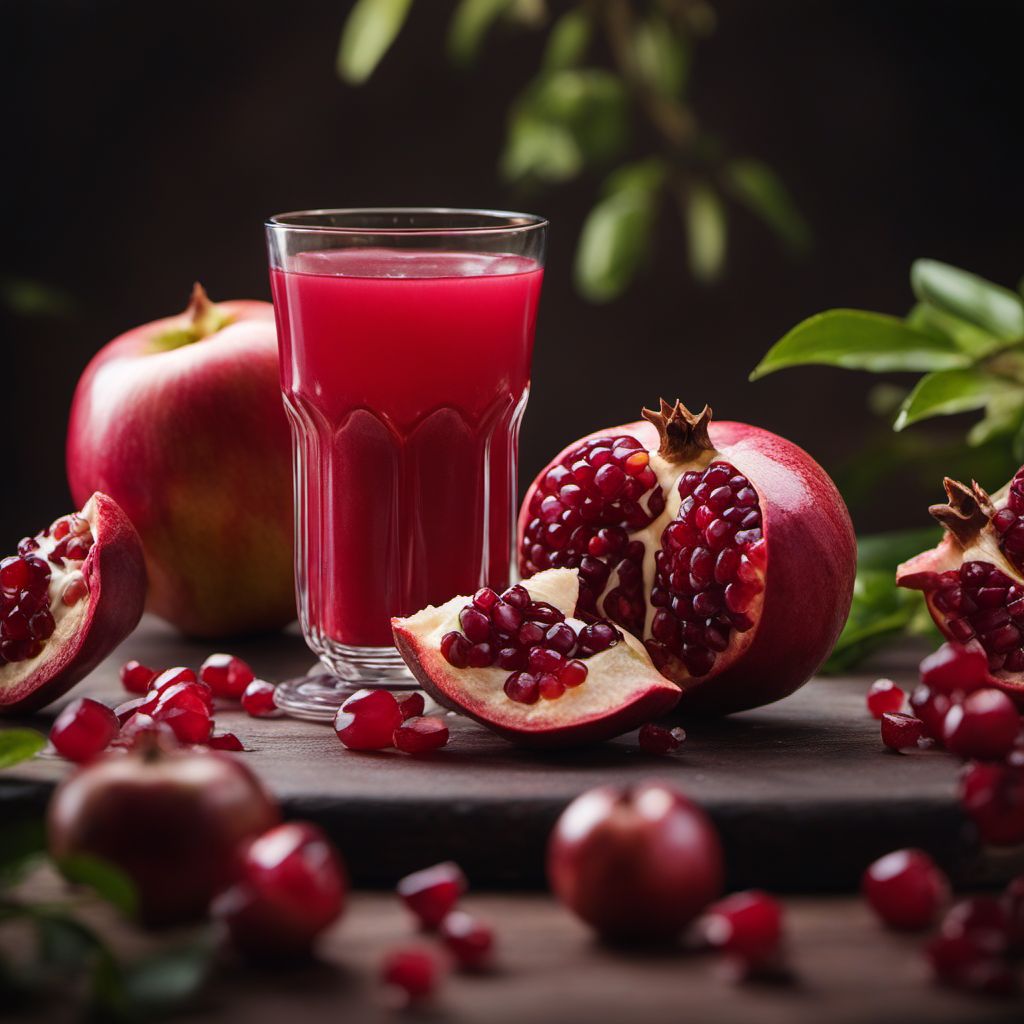
Ingredient
Juice, pomegranate
"The Ruby Elixir: Unveiling the Secrets of Pomegranate Juice"
Pomegranate juice is a rich, ruby-red liquid with a slightly thick consistency. It possesses a unique balance of sweet and tart flavors, making it a refreshing and invigorating addition to both sweet and savory dishes. The juice has a smooth texture and a vibrant, fruity aroma. Its intense color and natural sweetness make it a visually appealing and flavorful ingredient.
Origins and history
Pomegranates have a long and storied history, dating back thousands of years to ancient civilizations such as Persia and Egypt. Native to the Middle East, pomegranates have been revered for their medicinal properties and symbolic significance in various cultures. They have been mentioned in ancient texts, depicted in artwork, and used in traditional ceremonies. Pomegranate juice gained popularity in recent years due to its numerous health benefits and culinary versatility.
Nutritional information
Pomegranate juice is a nutritional powerhouse, packed with antioxidants, vitamins, and minerals. It is a rich source of vitamin C, vitamin K, and folate. Additionally, it contains beneficial plant compounds such as polyphenols, which have been linked to various health benefits. A cup of pomegranate juice provides approximately 134 calories.
Allergens
Pomegranate juice is generally considered safe for consumption and is not commonly associated with allergies. However, individuals with a known allergy to pomegranates should exercise caution and consult with a healthcare professional.
How to select
When selecting pomegranate juice, opt for brands that use 100% pure pomegranate juice without any added sugars or artificial additives. Look for juices that are deep red in color, as this indicates a higher concentration of antioxidants. It is also advisable to choose organic options to minimize exposure to pesticides.
Storage recommendations
Pomegranate juice should be stored in the refrigerator to maintain its freshness and quality. Once opened, it is best consumed within a week. To extend its shelf life, the juice can be frozen in ice cube trays or airtight containers for up to six months.
How to produce
Growing pomegranate trees requires a warm climate with long, hot summers and mild winters. Amateur gardeners can cultivate pomegranate trees in containers or in the ground, provided they have well-draining soil and receive ample sunlight. Regular watering and occasional fertilization are necessary for optimal growth.
Preparation tips
Pomegranate juice can be enjoyed on its own as a refreshing beverage or used as a versatile ingredient in various recipes. It can be used to make vibrant cocktails, tangy salad dressings, flavorful marinades, and delicious sauces. To extract the juice from fresh pomegranates, cut the fruit in half and gently squeeze or use a juicer. Alternatively, store-bought pomegranate juice can be used as a convenient substitute.
Substitutions
If pomegranate juice is not available, cranberry juice can be used as a suitable substitute due to its similar tartness and vibrant color.
Culinary uses
Pomegranate juice is a popular ingredient in Middle Eastern, Mediterranean, and Indian cuisines. It is commonly used to enhance the flavor of salads, grain dishes, roasted meats, and desserts. Pomegranate juice can also be used as a base for refreshing sorbets, popsicles, and granitas.
Availability
Pomegranate juice is widely available in most grocery stores, supermarkets, and specialty food stores. It is also commonly cultivated in regions such as the Middle East, Mediterranean countries, and parts of Asia.
More ingredients from this category » Browse all

Juice, blackberry
The Dark Elixir

Juice, prune
The Sweet and Tangy Elixir of Prune Juice

Juice, pear
The Refreshing Elixir of Pear

Juice, grape
The Liquid Jewel

Juice, mango
The Tropical Elixir

Juice, pineapple
Tropical Elixir

Juice, nectarine
"The Golden Elixir: Unleashing the Vibrant Flavors of Nectarine Juice"

Juice, citrus
The Zesty Elixir
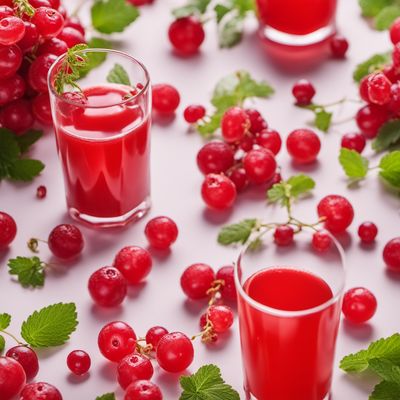
Juice, red currant
Tangy Elixir: Unleash the Vibrant Flavors of Red Currant

Juice, apple
The Essence of Nature: Exploring the Refreshing Apple Juice

Juice, elderberry
The Immunity Booster

Juice, black currant
The Dark Elixir
Recipes using Juice, pomegranate » Browse all

Turkish-Style Ceviche
Istanbul's Tangy Seafood Delight

Bukharan Jewish-Inspired Thanksgiving Feast
A Fusion of Flavors: Bukharan Jewish-Inspired Thanksgiving Feast

Anguillan Granadina Chicken
Tropical Delight: Anguillan Granadina Chicken

Narsharab - Azerbaijani Pomegranate Sauce
Pomegranate Elixir: A Taste of Azerbaijani Delight

Kabab Torsh with Pomegranate Marinade
Tangy Delight: Grilled Kabab Torsh with a Burst of Pomegranate Flavor
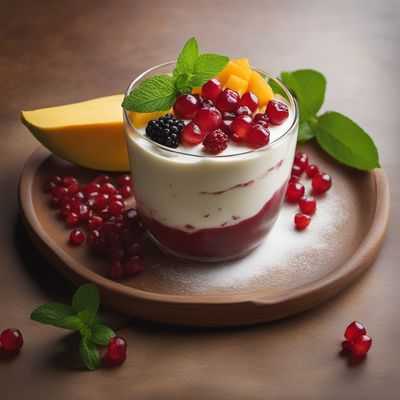
Saudi Arabian Fruit Delight
Exotic Arabian Fruit Medley
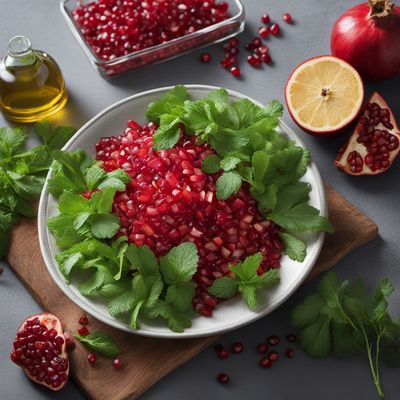
Khazar Salad with Pomegranate Dressing
Pomegranate Delight: A Refreshing Twist on Khazar Salad

Sachertorte
Turkish-Inspired Sachertorte: A Chocolate Delight with a Twist
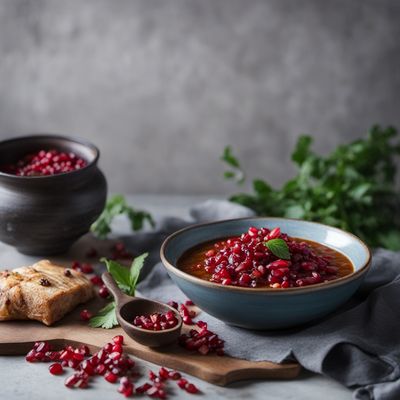
Sholeh Ghorbandi - Persian Walnut and Pomegranate Stew
Savor the Richness: Persian Delight - Walnut and Pomegranate Stew
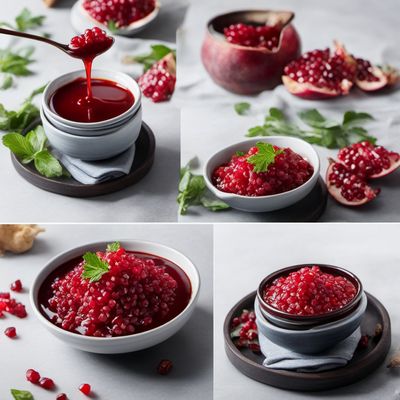
Korean-style Pomegranate Sauce
Tangy Pomegranate Delight: A Korean Twist on Narsharab

Syrian-inspired Otoro Nigiri Sushi
Silky Delights: Syrian-inspired Otoro Nigiri Sushi
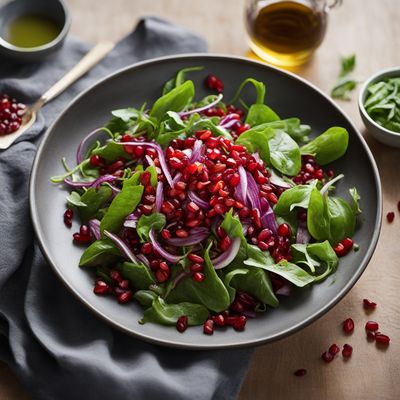
Grilled Vegetable Salad with Pomegranate Dressing
Sizzling Summer Delight: Grilled Vegetable Salad with a Tangy Pomegranate Dressing